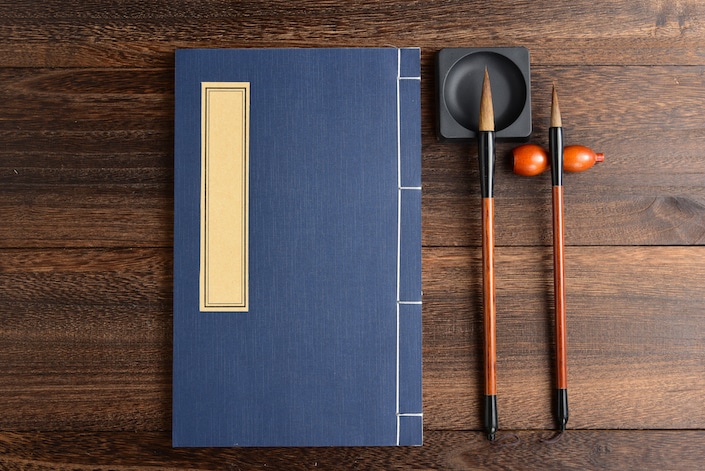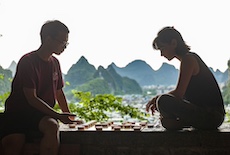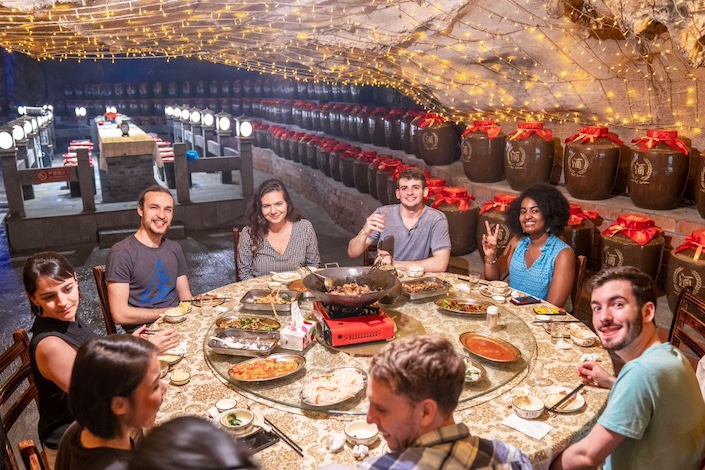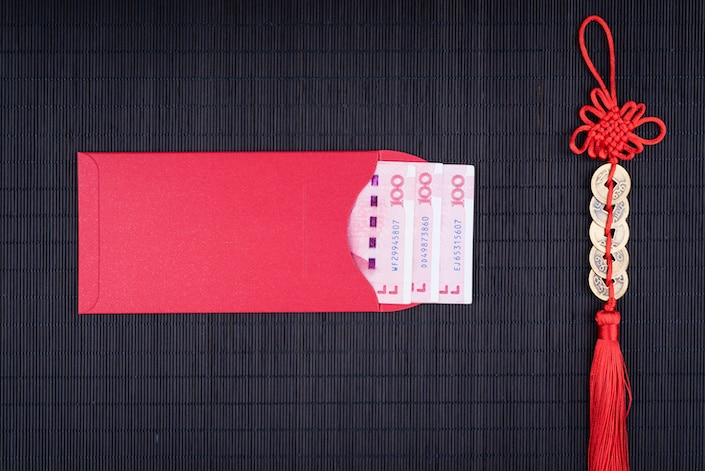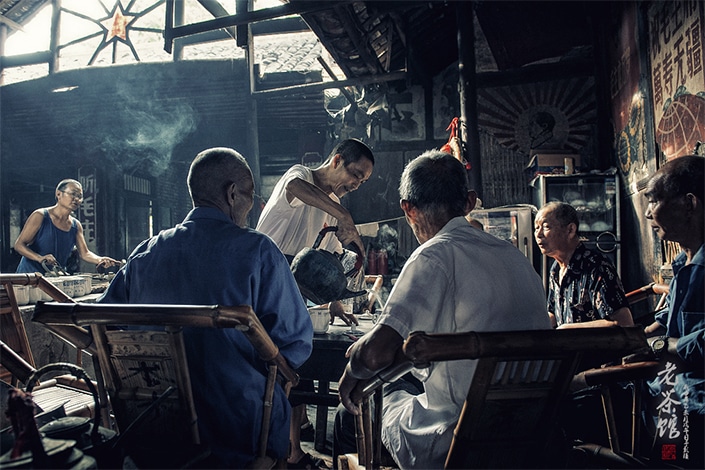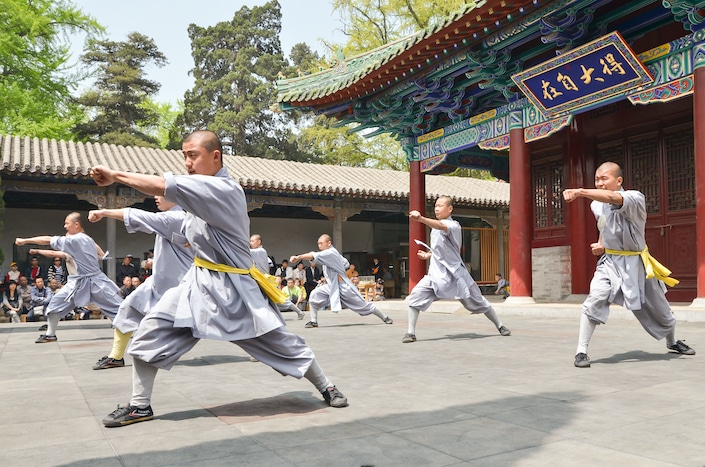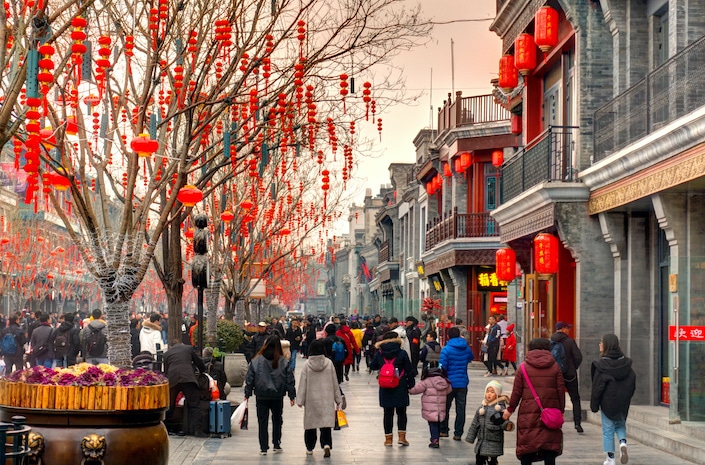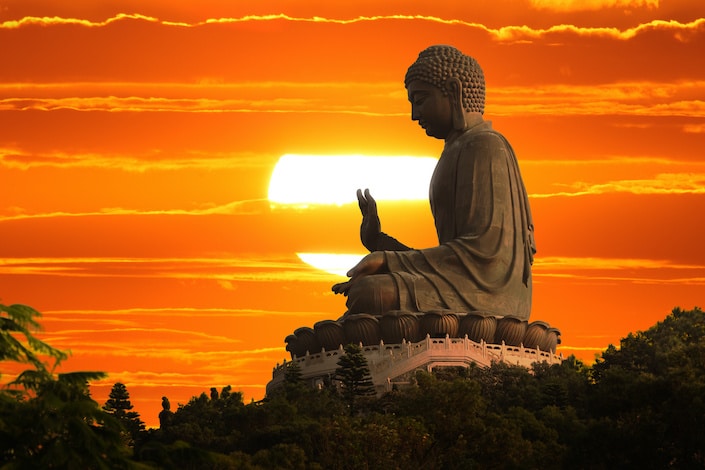Chinese Literature from Ancient Times to the Present Day
Learn Chinese in China or on Zoom and gain fluency in Chinese!
Join CLI and learn Chinese with your personal team of Mandarin teachers online or in person at the CLI Center in Guilin, China.
How many Chinese novels have you read? If the answer is still none, you’re in for a treat! Exploring the exciting world of Chinese literature is not only great fun; it’s also an ideal way to expand your knowledge of Chinese culture and history. Read this article to discover the works of some of China’s most well-known authors and poets, both ancient and modern.
A strong literary tradition
Moveable type and woodblock printing were both invented in China, and the strong emphasis on education in ancient China, especially among the Confucian elite, meant that there was widespread interest in and understanding of literature, at least among the educated classes, beginning early on in Chinese history.
This historically strong interest in creating and reading works of fiction contributed to the creation of China’s rich literary tradition that continues to exist today.
The most well-known forms of Chinese literature are classical Chinese poetry, especially that of the Tang Dynasty, the Four Great Classical Novels of the Ming and Qing, and the works of modern writers like Lu Xun.

China’s Four Great Classical Novels, among which is the Three Kingdoms, are famous throughout Asia.
Classical Chinese poetry
The Tang dynasty (618-907 CE) was a high point in terms of China’s cultural development. Therefore, it isn’t surprising that this was also a watershed moment for poetry in China. The Tang dynasty poets Li Bai (李白 Lǐ Bái) and Du Fu (杜甫 Dù Fǔ) are some of the most well-known and celebrated poets in modern China.
Although Li Bai did not invent any new poetic forms, he displayed an unparalleled mastery of existing forms and infused them with his own personality. His poems (诗歌 shīgē) are notable for their use of fantastic imagery and nostalgic sentiments, as well as for their glorification of wine and drunkeness. By contrast, Du Fu’s poetry is much more staid and tends to deal with themes such as history and morality.

Li Bai wrote poems full of strong emotions and fantastic imagery.
During the eighteenth century, many of the most celebrated Tang dynasty poems were collected into an anthology called Three Hundred Tang Poems (唐诗三百首 Tángshī Sānbǎishǒu). This collection has enjoyed immense popularity ever since and a copy can be found in most Chinese households. Many Chinese children today can recite several, if not all, of the poems from memory.
After the Tang dynasty, poetry continued to flourish during the Song dynasty (960-1279 CE), although a different style of poetry, known as ci (词 cí), became especially popular during this time. To this day, scholars and arm-chair intellectuals continue to debate the question of which period had better poetry, the Tang or the Song.
During the Ming (1368-1644 CE) and Qing dynasties (1636–1912 CE), the ability to compose classical-style poetry became an expected mark of cultural sophistication among China’s elite. Poetry composition was a popular pastime for the wealthy and the educated, who would compete with each other to see who could compose the best verses.

Emperor Kangxi of the Qing dynasty sponsored the work of many Chinese writers and intellectuals.
Classical novels of the Ming and Qing
In addition to Tang and Song dynasty poetry, China’s Four Great Classical Novels (四大名著 sìdàmíngzhù) also deserve a place in any discussion of Chinese literature (文学 wénxué). These massive classical novels are epic in scope and extremely lengthy.
Anyone who plans to spend time in China should gain at least a passing familiarity with the content of each as they continue to be referenced throughout Chinese popular culture today. For example, the Monkey King (孙悟空 Sūnwùkōng), hero of Journey to the West, is the subject of countless modern movies and cartoons.

The beloved Monkey King continues to appear frequently in modern cartoons, TV shows and movies.
The Romance of the Three Kingdoms
The Romance of the Three Kingdoms (三国演义 Sānguóyǎnyì) is a sweeping historical novel that covers a period of nearly 100 years and features almost 1,000 different characters. The work is generally attributed to a Ming dynasty writer called Luo Guanzhong.
The novel is set during the chaotic period that spanned the end of the Han dynasty (202 BCE–220 CE) and the beginning of the Three Kingdoms period (220-280 CE). It focuses on the exploits of various feudal lords who were either trying to restore or replace the Han dynasty. Although the story has been fictionalized and romanticized, it is largely based on actual historical events and people.
Many of the historical figures who play major parts in this novel, including Cao Cao (曹操 Cáo Cāo), Liu Bei (刘备 Liú Bèi) and Zhuge Liang (诸葛亮 Zhūgé Liàng) are still household names in modern China. In fact, many common sayings reference these characters. For example, Cao Cao is portrayed as an unsavory, somewhat evil character in the novel and so today, the common saying 说曹操,曹操到 (shuō Cáo Cāo, Cáo Cāo dào) is used to mean “speak of the devil.”
A Dream of Red Mansions
A Dream of Red Mansions (红楼梦 Hónglóumèng), also called Dream of the Red Chamber, is another prominent classical Chinese novel. Written by Cao Xueqin in the mid-18th century, this massive, semi-autobiographical tale charts the decline of a formerly wealthy and influential family. Scholars assert that the decline of this fictional family is meant to mirror the decline of the Qing dynasty.
The novel features a large cast of characters, many of whom are female, that hail from a variety of social classes. The novel also contains many details about everyday life and the social hierarchies that existed at the time. Therefore, it provides a fascinating window into 18th-century Chinese society.
A Dream of Red Mansions is a popular subject of study among scholars in China today, so much so that there is a special field, called Redology, devoted to the topic.

A Dream of Red Mansions explores the private lives and emotions of a sprawling cast of largely female characters.
Journey to the West
Journey to the West (西游记 Xīyóujì) is a Ming-era novel said to have been written by Wu Cheng’en. It is a romanticized account of the real-life pilgrimage of the Tang dynasty monk Xuanzang, who spent 17 years traveling from China to India and back in search of authentic Buddhist scriptures.
Journey to the West presents a fictionalized account of Xuanzang’s epic journey. In the novel, he makes the pilgrimage with the help of three disciples including a talking monkey (the beloved Monkey King), a former water monster known as Sha Wujing and a talking pig called Zhu Bajie. Throughout their travels, the characters are repeatedly accosted by various demons who they must find ways to outwit.
Journey to the West and the Monkey King character have proved enduringly popular, not just in China, but throughout Asia. This novel has even been called “the most popular literary work in East Asia.”

Journey to the West is based off of a Tang-era monk’s real-life pilgrimage to India.
The Water Margin
The Water Margin (水浒传 Shuǐhǔzhuàn), also called Outlaws of the Marsh, rounds out China’s collection of great classical novels. It was written in vernacular Chinese some time in the 14th century by Shi Nai’an.
Set in the Northern Song dynasty (960-1127 CE), the book tells the story of a band of 108 outlaws who live in Liangshan Marsh, Shandong Province. The outlaws defeat Song government troops during a great battle, after which they are granted amnesty and recruited to fight against various groups of rebels and invaders.
The story is based on popular folktales about the real-life bandit Song Jiang, who led an armed uprising against the Song dynasty.

The Water Margin is full of engaging anecdotes about the lives of the various outlaws of Liangshan Marsh.
Modern Chinese writers
As China emerged from countless centuries of dynastic rule and stepped into the 20th century, great societal and cultural changes shook the country. These sweeping changes were chronicled by the writers of the time.
Lu Xun
Lu Xun (鲁迅 Lǔ Xùn), who lived from 1881-1936, is one of the most well-known Chinese writers of the early 20th-century. Deeply affected by the vast socio-political changes that were happening in China during his lifetime, his writing can seem quite sophisticated, even today.
Lu Xun wrote in both classical Chinese and in vernacular Chinese, employing his distinctive ironic and satirical style to compose works of fiction which were sharply critical of society at the time, such as The True Story of Ah Q (阿Q正传 Ā “Q” zhèngzhuàn).

Chairman Mao was a fan of Lu Xun’s writing, which continues to be taught in schools and universities throughout China.
Zhang Ailing
In addition to Lu Xun, another well-known representative of modern Chinese literature is Zhang Ailing (张爱玲 Zhāng Àilíng), also called Eileen Chang, who lived from 1920-1995.
Her novels (小说 xiǎoshuō), which depict everyday life among upper-class families in Shanghai and Hong Kong in the 1940’s, frequent deal with difficult romantic relationships between men and women. Her works often feature declining aristocratic families with international ties such as her own. She is also known for exploring the social tensions that women experienced in a rapidly changing society.
One of her most well-known works is Love in a Fallen City, which explores the tumultuous relationship between a Chinese divorcée and a foreign-educated bachelor during the Japanese invasion of Hong Kong.

Zhang Ailing’s work is full of insights into the 20th-century decline of China’s traditional aristocracy.
Qiang Zhongshu
Students of modern Chinese literature should also be familiar with the writer Qiang Zhongshu (钱锺书 Qián Zhōngshū), who lived from 1910-1998. His most celebrated work is a satirical novel called Fortress Besieged about the various misadventures of a mediocre student who has just returned from abroad with a fake university degree.
Qiang Zhongshu’s novel follows the student’s romantic exploits, starting with his attempts at courtship and ending with the breakup of his marriage. It takes its name from a French saying which can be translated as, “Marriage is like a fortress besieged. Those who are outside want to get in, and those who are inside want to get out.”

Qiang Zhongshu’s work explores the various misadventures of a new breed of Chinese intellectual caught between East and West.
Contemporary Chinese literature
One especially notable contemporary Chinese writer who is still alive today is Mo Yan (莫言 Mòyán), born in 1955, who received the Nobel Prize for Literature. He is known for writing in a style that has been described as “hallucinatory realism.”
Mo Yan’s works are full of social commentary and dark humor. In the West, he is best known for Red Sorghum Clan. This novel served as the basis for the film Red Sorghum, directed by Zhang Yimou, a notable Chinese director who would later receive international recognition for orchestrating the opening and closing ceremonies of the 2008 Olympic Games.
Those looking for a lighter read could consider checking out works in the popular subgenre of Chinese fiction known as wuxia (武侠 or wǔxiá). These novels, which experienced a hayday from the 1960’s to the 1980’s, detail the chivalrous exploits of ancient Chinese martial arts heroes.
Recently, Chinese science fiction writers have also been gaining increasing attention thanks to the success of The Three Body Problem (三体 Sāntǐ), the first book in the Remembrance of Earth’s Past trilogy by Liu Cixin (刘慈欣 Liú Cíxīn), born in 1963. In a sign of growing international interest in Chinese fiction, both Barack Obama and Mark Zuckerberg have proclaimed themselves fans of Liu Cixin’s work.
As the Middle Kingdom becomes increasingly influential on the world stage, understanding contemporary China is becoming increasingly important, and what better way to do that than by reading contemporary Chinese fiction?

Exploring contemporary Chinese fiction is a great way to put your finger on the pulse of modern China.
Happy reading!
Reading fiction and poetry is an amazing way to improve your language skills and increase your Mandarin vocabulary. The benefits of reading Chinese literature go beyond language, however. In fact, enjoying works of fiction by Chinese writers is perhaps one of the most entertaining and effective ways to expand your knowledge of Chinese society, culture and history.
If you don’t feel up to reading a whole novel in Chinese yet, don’t worry. The majority of the literary works discussed in this article have been translated into English, making them accessible to millions of people around the world.
If you do want to dive into the world of Chinese literature written in Chinese, we invite you to do so with one of the amazing teachers at CLI. No matter what your level, you can also practice your reading skills with the help of CLI’s Graded Readers. Happy reading!

Reading Chinese literary works, whether in Chinese or in translation, is guaranteed to expand your horizons.
Chinese literary vocabulary
| Hànzì | Pīnyīn | Definition |
|---|---|---|
| 文学 | wénxué | literature |
| 诗歌 | shīgē | poem |
| 唐诗三百首 | Tángshī Sānbǎishǒu | Three Hundred Tang Poems, a famous collection of ancient poetry |
| 词 | cí | a style of Chinese lyric poetry |
| 背书 | bèishū | to recite a text from memory |
| 李白 | Lǐ Bái | a Tang poet |
| 杜甫 | Dù Fǔ | a Tang poet |
| 四大名著 | sìdàmíngzhù | China's Four Great Classical Novels |
| 小说 | xiǎoshuō | novel |
| 说曹操,曹操到 | shuō Cáo Cāo, Cáo Cāo dào | popular saying equivalent to "speak of the devil" |
| 武侠 | wǔxiá | wuxia; subgenre of novels about martial arts heroes |
| 作家 | zuòjiā | author; writer |
| 经典 | jīngdiǎn | classic |
| 原文 | yuánwén | original text |
| 译文 | yìwén | translation |

Anne Meredith holds an MA in International Politics and Chinese Studies from the Johns Hopkins School of Advanced International Studies (SAIS). As part of the graduation requirements for the program, Anne wrote and defended a 70-page Master's thesis entirely in 汉字 (hànzì; Chinese characters). Anne lives in Shanghai, China and is fluent in Chinese.


